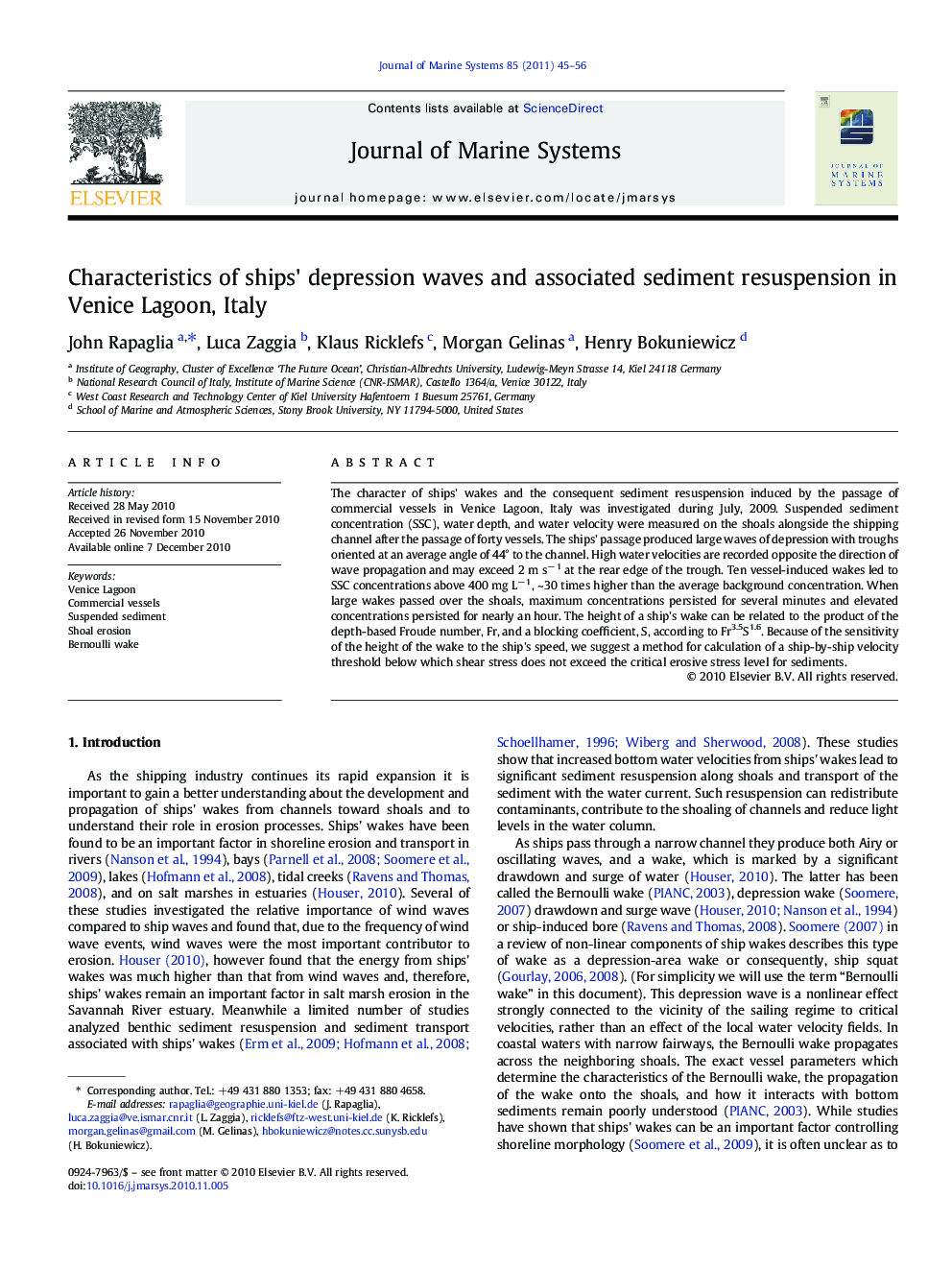| Article ID | Journal | Published Year | Pages | File Type |
|---|---|---|---|---|
| 4548512 | Journal of Marine Systems | 2011 | 12 Pages |
The character of ships' wakes and the consequent sediment resuspension induced by the passage of commercial vessels in Venice Lagoon, Italy was investigated during July, 2009. Suspended sediment concentration (SSC), water depth, and water velocity were measured on the shoals alongside the shipping channel after the passage of forty vessels. The ships' passage produced large waves of depression with troughs oriented at an average angle of 44° to the channel. High water velocities are recorded opposite the direction of wave propagation and may exceed 2 m s− 1 at the rear edge of the trough. Ten vessel-induced wakes led to SSC concentrations above 400 mg L− 1, ~ 30 times higher than the average background concentration. When large wakes passed over the shoals, maximum concentrations persisted for several minutes and elevated concentrations persisted for nearly an hour. The height of a ship's wake can be related to the product of the depth-based Froude number, Fr, and a blocking coefficient, S, according to Fr3.5S1.6. Because of the sensitivity of the height of the wake to the ship's speed, we suggest a method for calculation of a ship-by-ship velocity threshold below which shear stress does not exceed the critical erosive stress level for sediments.
Research Highlights►We analyze 40 ship waves of depression in Venice Lagoon. ►Large magnitude leading troughs cause massive resuspension events. ►These events may be a cause of significant erosion which occurred in Venice Lagoon. ►We propose a method to calculate safe navigation speed based on ship parameters.
